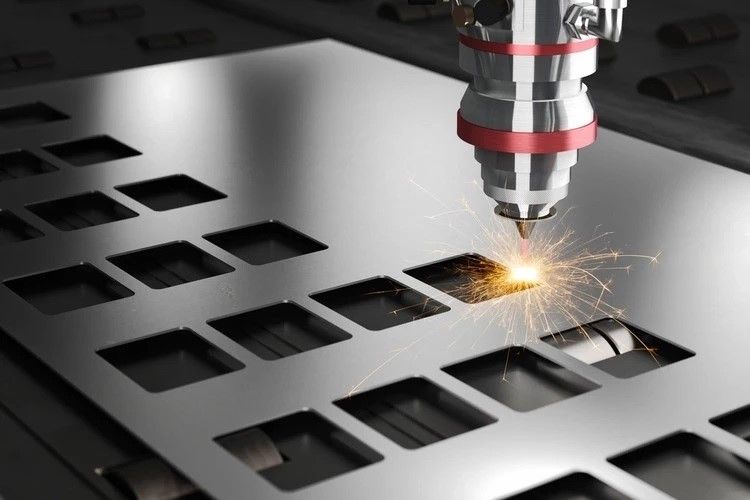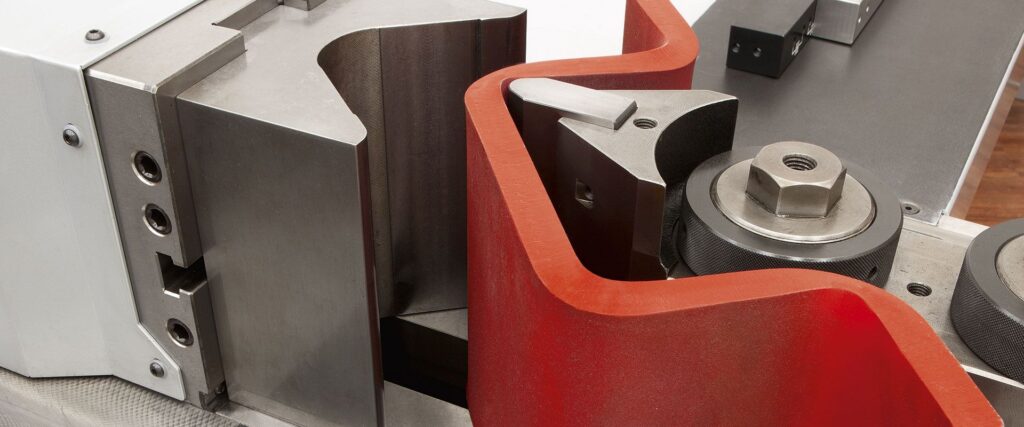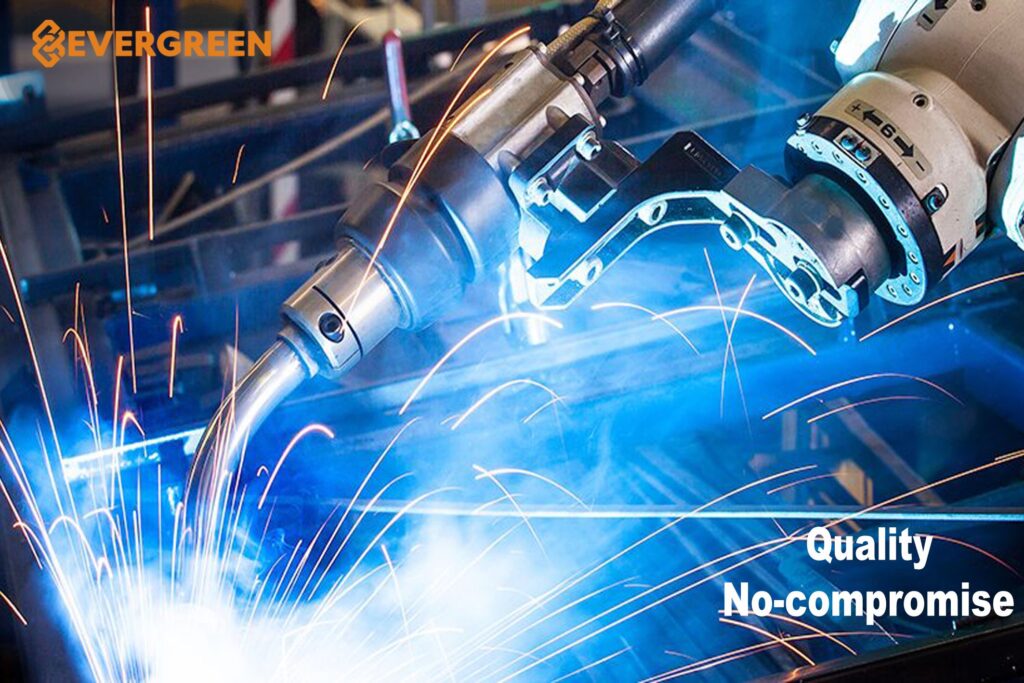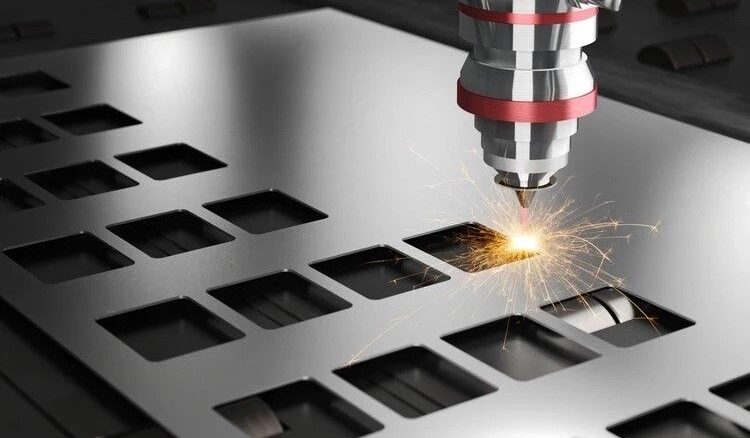Abstract: With the vigorous development of all walks of life in China, the manufacturing industry also has good development prospects, and there is a higher need for sheet metal processing technology. From the analysis of the current development of sheet metal processing technology, the processing level is getting better and better, but there are still many problems in the overall processing process, which is also an important reason that affects the production efficiency of sheet metal workpieces and the quality of parts. This requires continuous improvement of sheet metal processing technology to improve the overall processing level. The following is a brief introduction to the sheet metal processing process, the difficulties encountered in the sheet metal processing process, and the improvement measures given.
Sheet metal workpieces involve a wide range of fields and are often used in various industrial industries. Sheet metal workpieces have high precision and are lightweight, and can be widely used in actual processing and production. Especially in recent years, sheet metal processing technology has been breaking through the traditional mode, bringing new and innovative methods to sheet metal processing, but the process involved in sheet metal processing is relatively cumbersome and needs to be paid special attention to, among which there are many difficulties. , this whole process brings some difficulties. Therefore, this paper discusses the difficulties of sheet metal processing technology, proposes improvement measures, and also proposes the application of extension technology in sheet metal processing.


1. Brief introduction of the sheet metal processing process
The process of sheet metal processing is mainly in three aspects:
(1)Blanking
In recent years, mechatronics equipment, such as CNC machine tools, has been gradually used in sheet metal processing, which makes the operation of the blanking process more convenient and improves the accuracy. In the specific blanking process, the quality of the metal sheet needs to be determined, and the hole size should be well controlled. For example, when using CNC machine tools, it is necessary to analyze the mechanical properties before the operation, and the blanking process should be combined according to the requirements of the drawing operation. control on. Because the blanking process can be done in many ways, Therefore, there are strict requirements in terms of material size and performance.
(2)Bending
Due to the differences in the mechanical properties of various materials, the spring back curvature will also be different. Therefore, when processing sheet metal, the minimum bending radius must be strictly controlled, and the minimum bending radius should be used as the basis. Thereby controlling the processing standard. At the same time, the distance between holes and heights, such as the height of straight edges, should also be controlled during the bending process. If there is no standard control, it will affect the progress of subsequent processing projects, and the opening of holes is a part of the bending operation. one of the main processes. In the whole operation of bending, the main attention is to avoid the mechanical properties of the material from winning the quality of the workpiece after the opening.
(3)Surface treatment and welding treatment
The welding process in the sheet metal processing process is a very frequently operated process, especially when processing a combination of multiple parts, it is necessary to use welding connections to make the sheet metal parts meet the standards in terms of accuracy and strength, and the commonly used welding methods, Mainly brazing, gas welding, arc welding, etc., the specific method used depends on the material. In addition, after completing the above steps, the processing of the parts should also be subjected to surface treatment, such as electroplating common cold-worked plates and then selecting the treatment plan according to the material conditions.


2. Analysis of difficulties in sheet metal processing
In sheet metal processing, the main key to processing is how to handle the metal sheet to ensure that the size and shape can meet the requirements. If the size and shape meet the standards, welding processing can be carried out, so that each small part can be combined. can be complex parts. Small parts are mainly sheet metal components, such as ventilation ducts, iron pots, funnels, elbows, etc. However, it should be noted that because the actual application requirements of sheet metal components are different, the shape and overall structure cannot be fixed, not only to control the cost but also to take into account the beautiful appearance. Therefore, when designing sheet metal, the diversity of design forms is also the key and difficult point of the design. There are difficulties not only in design but also in the processing process, such as the quality control during drilling, if the quality control is unreasonable, it will directly cause the quality of the finished product to not meet the requirements.
3. Analysis of improvement measures for sheet metal processing
According to the difficulties in sheet metal processing, a variety of improvement measures can be comprehensively considered. Specifically, we can start with the following aspects:
(1) Sheet metal processing material selection control
When selecting materials for sheet metal processing, it is usually required to be convenient for processing, and the strength must meet the standards, which is within the budget range of production costs. According to the results of practical research in recent years, it is mainly emphasized that when selecting sheet metal materials, it is necessary to ensure the utilization rate of materials and avoid material waste, and the materials of the same specification should be as low as possible in three or less. . For some parts that have high requirements for sheet metal structures, they can be processed directly by means of thin plate beading.
(2)Control of the quality of the hole-deficient structure
Because the punching operation is involved in sheet metal processing, when the hole design is not reasonable enough, it will have a direct impact on the subsequently processed products, including process control and the beautiful appearance of sheet metal processing. At the same time, it is also important to pay attention that when the square hole is processed to the root of the plate, it is necessary to avoid the deformation of the hole position due to the stretching of the plate. In addition, if threading is involved in the drilling operation, it is necessary to combine other methods such as spot welding nuts, flanging tapping, and other methods.
(3)Welding quality control
Welding is a very important step in the process of sheet metal processing. The main purpose of welding is to make the appearance of the product more beautiful and to effectively treat the surface seams. When welding, some materials need to use a fillet weld to achieve the purpose of welding, so there is no need to apply surface welding. The welding method depends on the material and actual requirements to choose different methods, such as carbon dioxide-shielded welding, gas welding, manual welding, etc. In order to ensure the best welding quality, in addition to selecting reasonable filler materials, it is also necessary to pay attention to whether there is enough space inside the structure to meet the welding requirements, so as to avoid the problem of insufficient space and causing problems with welding quality. In addition, some sheet metal is relatively thin. When welding seam processing, the welding time needs to be controlled. If the processing is not appropriate, it will directly affect the quality of the processed product, and in severe cases, the sheet metal will be deformed. In addition, when welding quality control, it is also necessary to start from the processing of solder joints, such as ensuring that the solder joints are symmetrical to avoid affecting the aesthetics of the product, and the distance between the solder joints and the solder joints must be strictly controlled. When the welding is over, the smoothing and polishing should be done in time to ensure the aesthetics of the sheet metal parts.


4. Application of extension process in sheet metal processing
(1)Laser processing technology
Today, with the continuous development of science and technology, many innovative technologies are also applied in the processing field, such as laser sheet metal processing technology. The main advantages of laser sheet metal processing technology are good directionality and good coherence, which are often used in the drilling process. The operation mode of this technology is flexible and can be adjusted according to specific actual needs, and it is also controlled by a computer, which plays a very important role in improving cutting accuracy.
(2)Computer-aided technology
In recent years, the level of sheet metal processing in China has been significantly improved, but there are still difficulties in the processing link, which needs to be carried out manually, which makes the design and processing efficiency low, and cannot meet the quality standardization. Therefore, computer-aided software is used, and the machining model is designed based on the size of the sheet metal workpiece under the application of the software and is directly restored with the machining workpiece. At the same time, the application of computer-aided software is also reflected in the application of computer function systems and databases. Among them, the functional system is to set the processing module under software programming, integrate the information database of sheet metal parts, and finally design the sheet metal parts. The design of the entire sheet metal part is realized by using a computer system, which can not only solve the problem of low efficiency in traditional manual design but also ensure the accuracy of the design precision. Therefore, the application of computer-aided technology in the processing and design of sheet metal parts is also one of the key extension technologies.
5. Conclusion
All in all, the application of sheet metal processing technology is an important key to improving the efficiency of sheet metal processing and the quality of produced products. In the actual processing process, it is necessary to be aware of the specific basic process of sheet metal processing and to be familiar with the process, such as the blanking process, the bending process, and the welding process, etc., all need to have a correct understanding. After understanding the difficulties in the sheet metal processing process, effective improvement measures should be adopted, and a variety of measures can be comprehensively considered, such as the selection control of sheet metal processing materials, the quality control of hole and defect structures, and the quality control of welding and so on. In addition, in the process of sheet metal processing, it is also necessary to consider the use of other extension processes, including laser processing technology and computer-aided technology, among which computer-aided technology is an important extension process for future development, so sheet metal processing in a variety of Improvement measures and auxiliary application of extension process can effectively improve processing efficiency and ensure processing quality.
Like this page? Share it with your friends!


